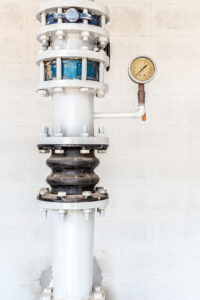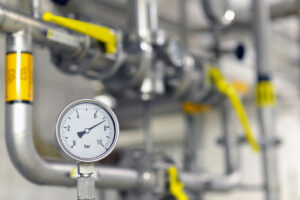The pressure gauge is a fundamental instrument across countless industries, from manufacturing and HVAC to oil and gas. Its primary function is to provide a clear, accurate reading of system pressure. A critical aspect of ensuring this accuracy lies in its zero point—the reading it shows when no pressure is applied. Understanding when and how to adjust this zero point, and recognizing when a gauge is not designed for such adjustment, is essential for proper maintenance and data integrity.
The Importance of the Zero Point
The zero point is the foundation of a pressure gauge’s calibration. When a gauge indicates a value other than zero at atmospheric pressure (a condition known as “zero drift” or “zero shift”), every subsequent reading will be offset by that error. This can lead to:
- Process Inefficiency: Operating a system at incorrect pressures can reduce efficiency, waste energy, and affect product quality.
- Safety Hazards: Overpressure or underpressure scenarios might go undetected, potentially leading to equipment failure or dangerous incidents.
- Inaccurate Data: Reliance on faulty data can compromise quality control, billing, and regulatory compliance.
When and How to Adjust the Zero
Most analog pressure gauges with a pointer (needle) feature an external zero adjustment. This is typically a small screw located near the dial, often under a protective cap or on the bezel.
Common scenarios requiring zero adjustment include:
- Mechanical Shock or Vibration: Continuous vibration or a sudden impact can cause the pointer to slip on its shaft or internally damage the movement, shifting the zero.
- Overpressure: Subjecting the gauge to a pressure beyond its maximum range can permanently deform the Bourdon tube or other sensing element, often accompanied by a zero shift.
- Normal Wear and Tear: Over time, the internal mechanism may experience slight wear, leading to a gradual drift from the true zero.
The Correct Procedure for Zero Adjustment:
- Isolate and Vent: Safely isolate the gauge from the pressure source. Ensure the pressure on the gauge is completely released to atmospheric pressure.
- Verify Conditions: Confirm that the gauge is at ambient temperature and that no residual pressure is trapped.
- Make the Adjustment: Using the correct-sized screwdriver, gently turn the zero-adjustment screw until the pointer aligns perfectly with the “0” mark on the dial.
- Re-check: After adjustment, reapply a known pressure (if possible) to verify that the gauge reads accurately across its range. A zero adjustment primarily corrects the offset; if the gauge is non-linear, a full calibration may be required.
The Reality of Non-Adjustable Zero Gauges
Not all pressure gauges are designed to be user-adjusted. A “non-adjustable zero” is a deliberate design feature in certain contexts.
Why would a gauge have a non-adjustable zero?
- Sealed for Safety and Integrity: Many gauges, especially those used in critical safety applications or for regulatory metering (e.g., billing), are factory calibrated and then sealed. This prevents unauthorized or accidental tampering that could compromise safety or lead to financial discrepancies.
- Specific Technology: Digital pressure gauges often have software-based zeroing functions, but some basic models may not. Furthermore, gauges with liquid-filled cases are often sealed to prevent contamination and leakage; attempting to open them voids the warranty and can damage the instrument.
- Irreparable Damage: If the zero shift is significant and caused by a permanent deformation of the sensing element (like a kinked Bourdon tube), an external zero adjustment will be ineffective. The internal damage has altered the fundamental calibration, and the gauge must be replaced or sent to a certified lab for repair.
What to Do with a Non-Adjustable Gauge:
If a sealed or non-adjustable gauge shows a zero error, the correct course of action is replacement or professional recalibration. Do not attempt to break the seal or force an adjustment, as this will invalidate certifications and may render the gauge unsafe.
Conclusion
The ability to adjust a pressure gauge’s zero is a valuable feature for routine maintenance, correcting for minor drifts. However, recognizing a non-adjustable zero is equally important. It serves as a safeguard for critical measurements and indicates that the instrument requires professional attention. A disciplined approach—adjusting when appropriate and replacing or professionally recalibrating when necessary—is key to maintaining measurement reliability, process safety, and operational excellence.



